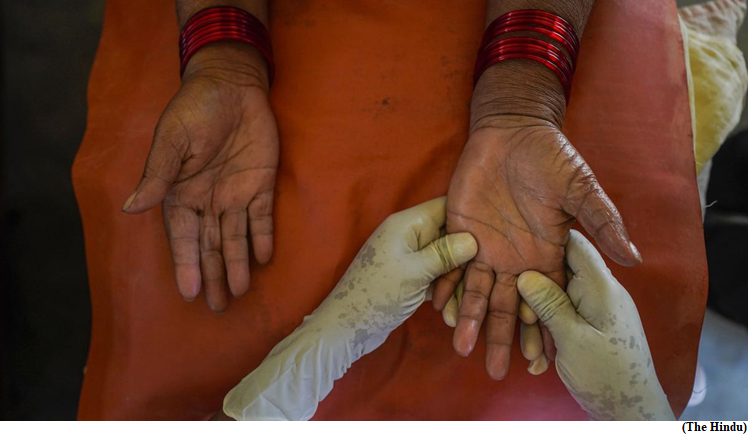India writes to WTO against Carbon border tax (GS Paper 2, International Organisation)

Why in news?
- India in a submission to the World Trade Organisation (WTO) recently has slammed carbon border measures being imposed by some countries, calling them discriminatory and protectionist, the Economic Times reported.
- India has written to WTO raising concerns over the selective application of Carbon border rules to ‘trade-exposed industries’ like steel, aluminium, chemicals, plastics, polymers, chemicals and fertilisers, which reflects the underlying competitiveness concerns driving such measures.
- According to the WTO rules, it is mandatory that there is non-discriminatory treatment for same products, irrespective of their production methods and such border measures can lead to "behind-the-border" protectionist practices.
Details:
- This statement from India comes at a time when the US introduced an Inflation Reduction Act to establish green technology industries. The European Union (EU) too has a Carbon Border Adjustment Mechanism which is a global carbon tax levied on imports to the bloc.
- Emphasising the importance to follow the principles of equity and common but differentiated responsibilities and respective capabilities, and the Nationally Determined Contributions (NDCs), India told the WTO that ‘Carbon border measures that are being considered for imposition on imported products effectively amount to prioritising a singular policy of the importing country over those of exporting countries and will amount to imposing a unilateral vision of how to combat climate change’.
What are Carbon Border measures?
- A few developed countries have imposed high costs on carbon-intensive businesses in their own countries to reduce emissions.
- However, it was found that businesses could overcome these restrictions by moving production to developing countries where the norms are less strict. This is known as carbon leakage. To curb these the countries started imposing Carbon Tax at borders.
Carbon Border Adjustment Mechanism (CBAM):
- EU defines CBAM as a ‘landmark tool to put a fair price on the carbon emitted during the production of carbon-intensive goods that are entering the EU, and to encourage cleaner industrial production in non-EU countries’.
- It is like a carbon tax on goods entering the EU from other countries. India's concern is that these border taxes on its goods entering EU would increase the prices of Indian-made goods and make them less attractive to buyers and could negatively affect demand.
- Such a tax could pose a serious threat to companies with larger greenhouse gas footprints.
Issue raised by India & other countries:
- India along with other BASIC countries (Brazil, South Africa, India and China) raised this issue in November 2021 at the COP27 in Sharm El Sheikh, saying it could “result in market distortion”.
- At COP 27, India said that ‘just transition’ to cleaner sources of energy did not mean that all countries should strive for the same level of decarbonisation.
- For India, just transition means the transition to a low-carbon development strategy over a time scale that ensures food and energy security, growth, and employment, leaving no one behind in the process.
India accounts for 52% of world’s new leprosy patients
(GS Paper 2, Health)
Why in news?
- With a renewed focus on tackling leprosy, the Union Health Ministry has devised a strategic road map for achieving zero cases of the infection by 2030.

Details:
- Despite India being declared “Leprosy Eliminated” in 2005, the country still accounts for over half (52%) of the world’s new leprosy patients, Union Health Minister said in a written message of the National Strategic Plan and Roadmap for Leprosy 2023-2027.
- Leprosy is a chronic bacterial infection, which affects skin, nerves, lungs and eyes.
Impact of COVID pandemic:
- Earlier gains made in the leprosy programme were reversed during COVID-19 as a sudden decline in case detection numbers was noted. Early detection of the infection in the affected person can save them from physical disability.
- With the COVID pandemic in 2020, case detection dropped by 43% in 2020-21 and by 34% in 2021-22 in comparison to the pre-COVID year 2019-20.
- Annual case detection rate has halved from 8.13 cases per lakh population to 4.56 cases in 2020-21. In 2021-22, it has settled at 5.52 cases per lakh.
Grade 2 disabilities:
- The decline in detection has led to increase in patients with grade 2 disabilities. COVID-19 in India had its severe impact on leprosy case detection services, and resulted in hidden cases and a probable increase in grade 2 disabilities, which may delay attainment of the goal of zero leprosy. In 2021-22, a total of 75,394 new cases were detected in India.
- A total of 1,863 grade 2 disabilities detected amongst the new leprosy cases during 2021-22, indicating a G2D rate of 1.36 per million population and 2.47% G2D among new cases. In 2022-23, for data available till August 2022, this rate has gone a notch up to 1.71 per million population.
Most affected States:
- Arunachal Pradesh, West Bengal, Bihar, Jharkhand, Odisha, Chhattisgarh, Maharashtra, Uttar Pradesh, Delhi, Madhya Pradesh, Gujarat, Dadra Nagar Haveli and Daman Diu have either one or more districts (total 82 districts) which are yet to achieve leprosy elimination target and contributes to more than 90% cases in the country.
Civil servants’ capacity building to involve latest Geospatial technology
(GS Paper 3, Science and Technology)
Why in news?
- Recently, the Union Minister of Science & Technology announced that in keeping with Prime Minister’s penchant for technology driven governance, the Civil Servants’ capacity building will involve the latest GeoSpatial technology which is one of the most recent technologies available.
- There is increasing integration between two of the important Ministries, namely the Personnel/ DoPT and Science & Technology/ DST.

NIGST in Civil Services:
- The NIGST (National Institute of Geo-Informatics Science & Technology) has the potential and expertise in Geospatial technologies to play a pivotal role in building the civil service.
- As per National Geospatial Policy (NGP) 2022, online courses in geospatial science & technology areas are to be made available through iGoT Karmayogi platform.
- NIGST can augment the civil service training eco-system with competencies & role based education in the areas of Basic GIS, Drone Survey & Mapping, GIS Analysis, Land Surveying, Cadastral Mapping, GNSS Surveying, Digital Mapping, LIDAR Mapping, Utility Mapping, 3D-City Mapping, Geoid Modeling, CORS Network etc.
National Geospatial Policy (NGP), 2022:
- The National Geospatial Policy (NGP), 2022 has laid down the overarching framework for holistic development of the Geospatial ecosystem to support the national development and economic prosperity.
- It has laid emphasis on developing the Geospatial skill and knowledge standards across the country because need for Geospatial professionals, their training & development in diverse area of geospatial & allied technology has been spelt out in the policy.
- The NGP categorically talks about developing NIGST into a Centre of Excellence (CoE) for providing training in specialized courses in the domain of geospatial science & technology.
About NIGST:
- NIGST (earlier known as Indian institute of Surveying & Mapping or IISM) is a Surveying & Mapping training institute under Survey of India known for short term and long term training & capacity building over past over 50 years to various countries (like Thailand, Nepal, Bhutan, Sri Lanka, Saudi Arabia, Oman etc.), Centre and state ministries/agencies, Security agencies, private industry etc.
Mission Juice will look for a habitable place around Jupiter
(GS Paper 3, Science and Tech)
Why in news?
- Jupiter recently became the planet with the most moons, after a dozen new lunar worlds were discovered lurking around it. The planet has trumped Saturn with its list of 92 moons in all.
- A new mission from Earth is ready to explore the planet's biggest moons and will be launched in April 2022.

JUICE:
- The spacecraft, dubbed Jupiter Icy Moons Explorer or Juice, has arrived at Europe’s Spaceport in French Guiana for final preparations before it lifts off onboard the Ariance-5 rocket.
- The spacecraft will be on an eight-year voyage to Jupiter, where it will explore the icy moons and try to find answers to the evolution of the biggest planet in our Solar System.
Agenda:
- The mission tries to understand how the icy worlds might harbour life and, study the Jupiter system as a model for complex environments around gas giant planets across the Universe. The primary goal will be to study Jupiter’s large, ocean-bearing icy moons.
- The spacecraft will be packed with 10 instruments and will characterize Jupiter’s ocean-bearing icy moons as planetary objects and possible habitats.
- The mission also looks for answers to, questions of is the origin of life is unique to our planet, or whether could it occur elsewhere in our Solar System or beyond.
Why Jupiter?
- The biggest planet in the Solar System, Jupiter is five times farther from the Sun than our Earth. This makes it a challenging target to reach.
- The spacecraft after launch will conduct several gravities assists with Earth and Venus to race toward Jupiter for an arrival scheduled in 2031.
- Once around Jupiter, the mission will conduct 35 flybys of the gas giant’s moons to explore its principal objectives: Callisto, Europa, and Ganymede.
- The mission will conclude with an extended study of Ganymede – in 2034 it will become the first spacecraft to orbit a moon other than Earth’s.





